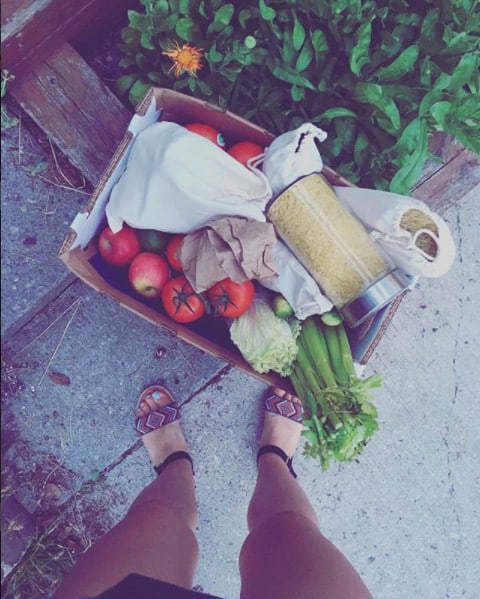
This blog post was written by my wonderfully talented friend Suzanna Brusikiewicz. If you would like to connect with her please check out her amazing Instagram, or YouTube Channel . Thank you Suz for writing this very important and eye-opening article.
I had always felt a really strong connection to animals. Since I was a little one, I remember appreciating animals to an extent that seemed to surpass those around me (you mean, you don’t burst into tears at the sight of a grazing cow?).
All my life, I went through phases of being obsessed with particular species of animals for long periods of time. I remember seeing a stuffed, white arctic fox at the mall, and begging my parents to get it for me for months — they finally cracked around the holidays, and I proceeded to share my bed with that fox, and obsess over its kind, for most of my childhood. Later, in university, it was all about penguins. Now, it’s another kind of bird that I’ll get into shortly. And on it goes.
When I decided to give up animal products and embrace a vegan lifestyle, I felt as though my actions were finally aligned with my values in a way that I didn’t know was possible. I loved animals so much, and my life was finally reflecting that in every possible way. It just felt right. And even though growing up I didn’t quite make the connection between what I was eating and the animals I cherished, I think that on a subconscious level it always hurt me to engage in the practice. Once I did make the connection in a very confrontational way, (I spent a night, huddled in a corner, sobbing over animal factory footage), there was no question in my mind that I would no longer play a role in the harm inflicted upon these loving, innocent beings. I was so sure of it, in fact, that I got a tattoo to commemorate the change. It’s served as my loving reminder ever since.
A few years later, I came across a documentary called Albatross. I found myself huddled in my room, sobbing once again. This time, the monstrous culprit was plastic. The film — in the most haunting, beautiful way, mind you — profiles the Laysan Albatross that live on the island of Midway Atoll, 2000 miles away from any continent, nestled between North America and Asia. Because Midway is so remote, it hurt to see our plastic waste encroaching on these birds’ lands in devastating amounts: our straws, our bottle caps, and countless unidentifiable, colourful chunks of things we discarded months, no, decades ago.
This plastic was being recovered from their lifeless bodies, and documented by the film’s creator, Chris Jordan. With bird after bird, these brightly-coloured poison bits invaded their bellies, preventing them from gathering sustenance from the surrounding waters they knew so well. Why were they ingesting plastic, you might ask? Because it looks a lot like the food they eat, and according to the Smithsonian: Ocean Portal, it also enters their systems when they skim the water’s surface with their beaks as a way to capture their food. They then feed this plastic to their chicks, or succumb to it themselves. The plastic can either injure them inside of their bodies on the way down, or starve them to death as they end up feeling full with what isn’t food, or anything they can pass. If they don’t suffer from ingestion injuries or starvation, it’s the lead poisoning.
What was also heart-wrenching to me is that despite the suffering we cause them, they don’t see the destructive human hand that feeds them. In behind-the-scenes clips, the crew behind Albatross would time and time again demonstrate how these majestic creatures welcomed them with open wings, barely flinching as they got up close and personal with their cameras. And these are formidable creatures; the average wingspan of an Albatross can reach 3.5 metres, making it the largest wingspan of any living bird. They can soar in the air for tens of thousands of miles, for days on end. And they engage in a well known synchronized courtship dance that baffles observers. Needless to say, these are majestic creatures, that like all creatures — deserve our sanctity and respect.
Image courtesy of: The Odyssey Online
Overwhelmed? So am I. But hang in there for just a little bit longer. We also have to talk about the Great Pacific Garbage Patch that’s floating in the middle of the Pacific Ocean (one of five patches — and counting — around the world). More like a toxic soup, it’s a collection microplastic bits that leech chemicals into the water as the plastic breaks down. Albatross are just one of the countless marine species suffering from the reaches of these plastic wastelands. Apart from the urgent, innovative, and admirable clean-up efforts in the works by some, the root of the issue — us — remains intact, and we’ll continue to feed these swirling gyres if we don’t see the truth of our actions and their disastrous consequences.
When I thought about going plastic-free without the resources, guidance or know-how, I was overwhelmed, just like going vegan for the first time. In July, I discovered that it was plastic-free month, and that my coveted film-to-be, Albatross, was now complete and making its way through the festival circuit. In addition to that, one of my close friends was getting into the zero-waste movement: a perspective shift that strives to re-engage with a circular relationship to the things we purchase and use, rather than a linear one (1.use, 2. toss). I was in.
I’m not alone in the belief that we instinctively don’t want to harm other beings, and in the same right, I also believe that we don’t want to create waste. Think about the times you order in and find yourself dealing with those containers, napkins, cutlery, bags. Does it cross your mind that it’s wasteful? Painful, even? It probably does, in some way, shape or form. If you’ve ever littered or come across a natural space infested with bottles, cans and chip bags, you probably grimace inside, even if you’ve justified it in some way: “I don’t know what else to do with this, there’s no trash can around”, “this isn’t my trash, so it’s not my responsibility”. Us non-litter folk make our best effort to recycle, to compost, to educate ourselves on what goes where. But sometimes our best intentions can only go so far.
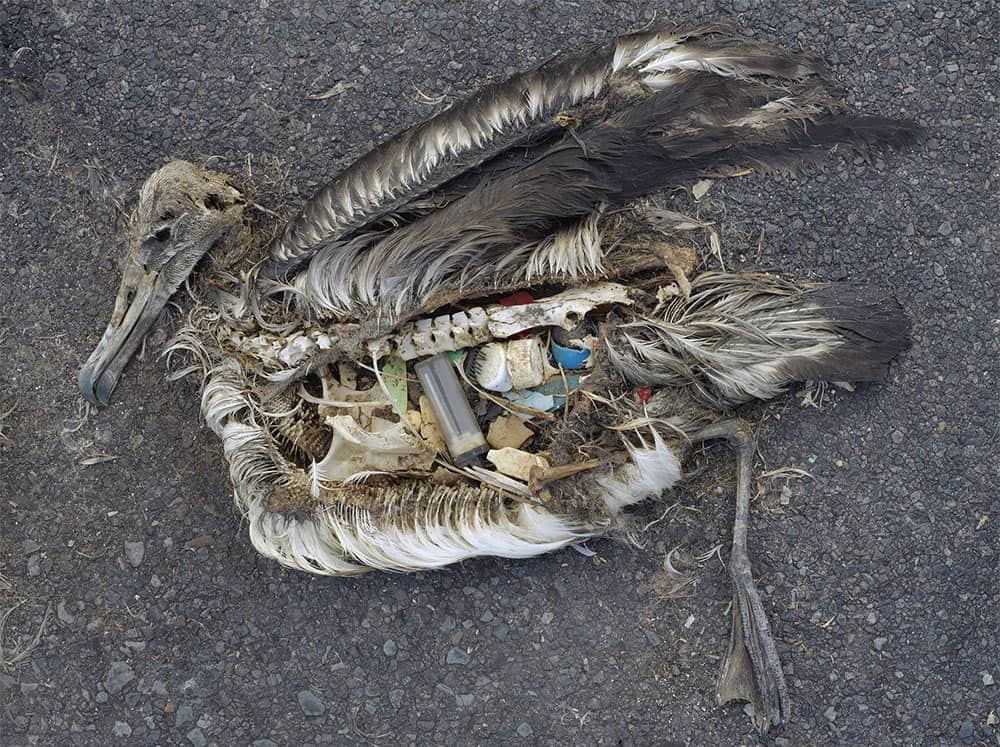
There are so many plastics you can’t recycle. And the small percentage that gets recycled only has so many uses, and for so long. Most plastics end up in, or are diverted to landfills. Plastics drift, break down into harmful microplastics, and join the likes of those garbage patches we learned about earlier. We exfoliate our faces with plastic microbeads, and don’t realize that those kinds of things just never go away. Even the laundering of synthetic materials, like polyester and synthetic fleece has been found to deposit plastic microfibers into our waterways in a big way. Plastic doesn’t biodegrade, and as stated on 5Gyres.org, “most of the plastic we started using in the last century is still in our environment today.” Even compostable plastics pose a problem, because they need ideal conditions to break down, and that’s often not the case wherever they end up. Recycling is simply not the end game we want it to be. Plastic just has a way of wreaking havoc on the world no matter where it ends up.
So, like all seemingly insurmountable problems, it might seem impossible to make a dent on your own, but look at veganism now. Changes in attitude and lifestyle have a cascading effect, and if — like that article headline states — Instagram can account for a rise in vegans, it’s time to populate that #zerowaste and #plasticfree hashtag, my friends.
From a humbled newbie to plastic-free life, here are a few insights, tips and tricks that I’ve acquired thus far to reduce plastic in your life, and take matters into your own hands. Your conscience, your heart, your world, and the animals living in it, will thank you.
Photo courtesy of: Suzanna Brusikiewicz’s Instagram page
5 Tips to Reduce Plastic Waste
1. Own up to your plastic footprint
It’s amazing how much plastic we go through in a given day, week or month. That container of fruit salad or bag of lettuce. The sushi takeout. The plastic cup, lid and straw from our venti iced latte. The straw in that cocktail. The packet of hot sauce we squeezed onto our fries. That water bottle we thought we needed to quench our thirst. The stir stick and sugar packet we grabbed for our cup of joe. That silk-lined, trendy tea bag in our cuppa tea. You get the idea. It can be quite a shock to the system, but we need to see it with new eyes to really make a change. Pretend you’re a scavenger collecting plastic gold for money. Look into the different items you use and where they actually belong when it comes to your city’s waste practices, and find out what their breakdown lifetimes might be. That plastic bag you used for ten minutes? It’s going to outlive you.
Photo courtesy of: Suzanna Brusikiewicz’s Instagram page
2. Look into plastic-free and zero-waste inspo
So what is it all about? Firstly, it’s a matter of progress, not perfection. Don’t sweat too much over the word “zero”. Overall, it’s about gaining a new perspective on our relationship with the things we call ours, with the substances and materials that make them. Adopting that circular mindset. Using what we have on hand to maximum capacity. Foregoing wasteful, disposable practices: no more straws or little sauce containers. Hitting up farmer’s markets. Buying in bulk. Saying no to take-out and opting to dine in instead. These are just some of the strategies of a zero-waster. Might I add that a bounty of fresh, unpackaged vegetables, greens and fruit from a local market is a thing of beauty? It’s also fun to talk to farmers. Those pretty dish towels you keep buying that don’t actually absorb water but look nice (is that just my problem)? They have a use now: as snack and bread wraps. Look it up! You can make most of your own hygiene products like deodorant, shampoo, body lotion, toothpaste, and eliminate those nasty chemicals from your daily body care rituals. You won’t believe how many wonderful, easy, approachable hacks await you that your grandma was likely a pro in, because, as with a lot of green things, we didn’t always carry on in a disposable society — a lot of these wise practices precede us, and are making a timely comeback. See the bottom of this article for some amazing plastic-free and zero-waste Instagram accounts you can follow to start to get the wheels turning.
 3. Eliminate the worst of the worst first
3. Eliminate the worst of the worst first
It might feel overwhelming to think no plastic off the bat, but there are some baddies you can work to cross off your list first. If you need some conviction, cozy up to a documentary like Plastic Ocean or Albatross tonight, and you’ll soon find it in you. Black plastics can’t be recycled, so that’s a good place to start. You’ll see it among cutlery, takeout containers, and some coffee lids — which brings us to: coffee. Coffee cups can’t be recycled because they contain a plastic coating to keep liquids from soaking through. See step #3 for the light at the end of the tunnel there. Small, short-term use plastics like straws, and those silly Starbucks “splash sticks” can’t be recycled either, because they’re too small for most sorting systems. Plastic bags drift into oceans and hurt marine life. So do balloons, for that matter. Sea turtles mistake these items for jellyfish, and upon ingesting them, can starve, or develop a buoyancy issue that causes them to float and lose their ability to dive and swim. It’s just not worth it.
Photo courtesy of: Suzanna Brusikiewicz’s Instagram page
4. Stop neglecting that reusable coffee cup you bought two years ago
Oh I know you probably own one, or have, at some point. The first and easiest thing you can do that will make a considerable difference, is getting, and using, a reusable cup. But get one that you can fall in love with so it becomes ingrained in your soul. You can go with the old school, aluminum mug your uncle takes on his camping trips, if that’s how you roll. You can purchase a Joco or Keep Cup that you can customize to your heart’s content. You can buy those ceramic Starbucks cups that look like the disposable ones if they tickle your fancy. You can even use a mason jar, and purchase a Sippy lid, or be a badass and sip it straight from the jar. And best of all, you’ll get a discount at most coffee shops. Find a convenient way to have it with you when you’re on the go, and rinse and reuse, endlessly. I’ve had my local barista rinse out my cup before my next order. And, if you’re comfortable, let’s move beyond the coffee and talk reusable water bottles, reusable bags, and your own containers for food takeout. Apart from the occasional crab apple, most people I‘ve encountered are pleased to see a reusable option and are happy to oblige, even if it’s a little outside the norm. If you meet resistance, remember that it’s often just that one person’s lack of understanding, or, it’s an unfortunate set of corporate rules an employee can’t work their way around. Voice your intentions calmly, or walk away.
Photo courtesy of: Suzanna Brusikiewicz’s Instagram page
5. Bulk is Your Best Friend
I always thought that bulk stores were for tempting yourself with treats you weren’t allowed to snack on. I remember my mom doing some bulk shopping when I was younger, but somehow, for most of my adult life, I completely forgot about the fact that this is the easiest way to shop. It’s also cheaper. Depending on your bulk store, you can often bring your own containers and jars to fill with chosen items, you just have to weight, or tare them first. That might mean taking your containers to the register beforehand so that they can be weighed and tagged, or taring them on the scales yourself if the store has a process for that. I’ve done both, and I can tell you it’s a painless process with so many rewards to reap. Have you ever swirled around a giant spoon of peanut butter in a bucket, and oozed it into your own jar? Gotten an arm workout trying to scrape out virgin coconut oil out of a bucket? Revelled in the sprinkling sound of grains spilling into your reusable cloth bag? Well, you will soon, my dear. And if you’re into any kind of ASMR, a bulk store is your local paradise. All you need is your containers beforehand: be it jars you already own, reused jars from old condiments and sauces, new jars that you can buy for pennies, drawstring cloth bags you can buy or make yourself, tupperware containers, and so on. It’s the epitome of resourcefulness, and it feels like such a win when you realize what treasures you already had on hand.
Photo courtesy of: Suzanna Brusikiewicz’s Instagram page
So to recap, plastic-free is good for the animals. The planet. Our hearts and our souls. Our senses (ASMR). And our wallets. I’ve only given you the basics that I’ve learned in my month of plastic-free, from my close friend who’s my personal champion of the lifestyle, and from sources of inspo online. Just as I felt when I started to adopt a plant-based lifestyle, I feel closer to my true self. My values feel aligned. I feel calmer, freer, and happier. I think that’s because it feels good to react to the things we see around us that tug at our heartstrings. We want to be better, so let’s be better.
Zero-wasters you need to follow:
https://www.instagram.com/trashisfortossers/
https://www.instagram.com/_wastelandrebel_/
https://www.instagram.com/bezerowastegirl/
https://www.instagram.com/zerowastechef/
https://www.instagram.com/rocket_science/
https://www.instagram.com/sustainably_vegan/
Check out these plastic documentaries:
http://www.albatrossthefilm.com/trailer.html
https://www.plasticoceans.org/film/
This blog post was written by my wonderfully talented friend Suzanna Brusikiewicz. If you would like to connect with her please check out her amazing Instagram, or YouTube Channel .



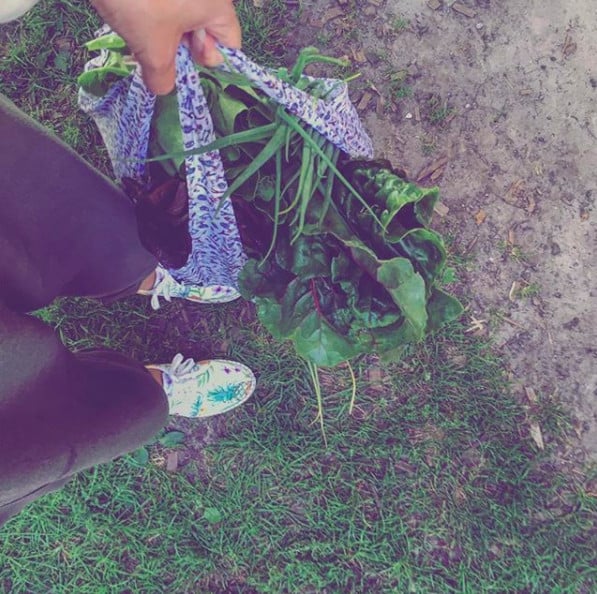
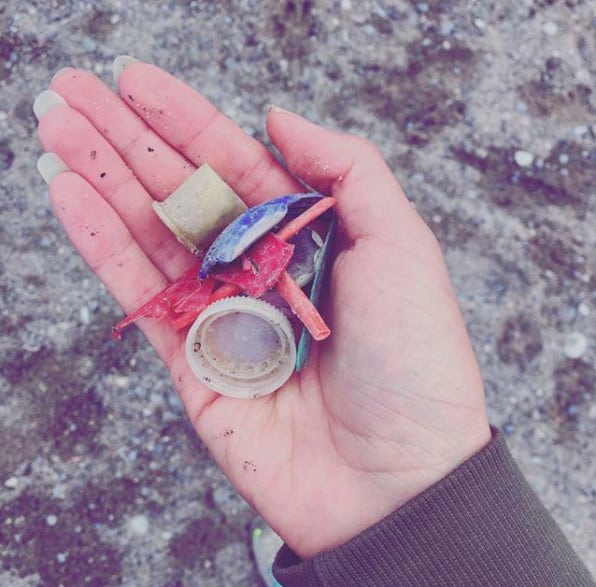
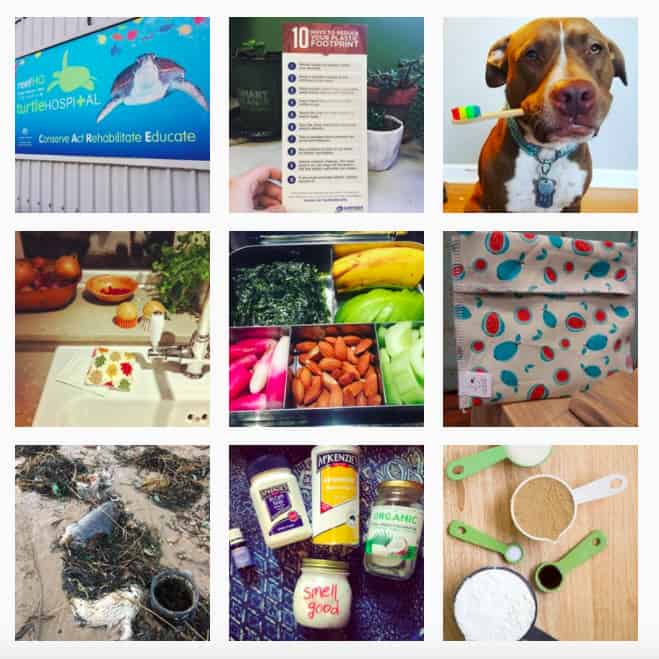 3. Eliminate the worst of the worst first
3. Eliminate the worst of the worst first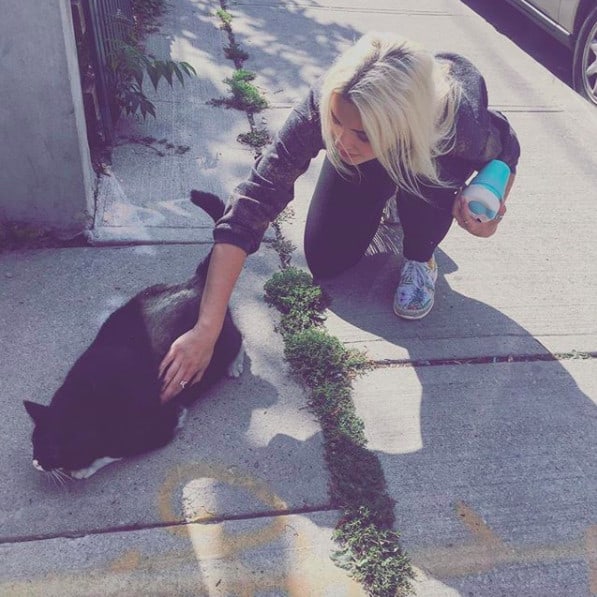
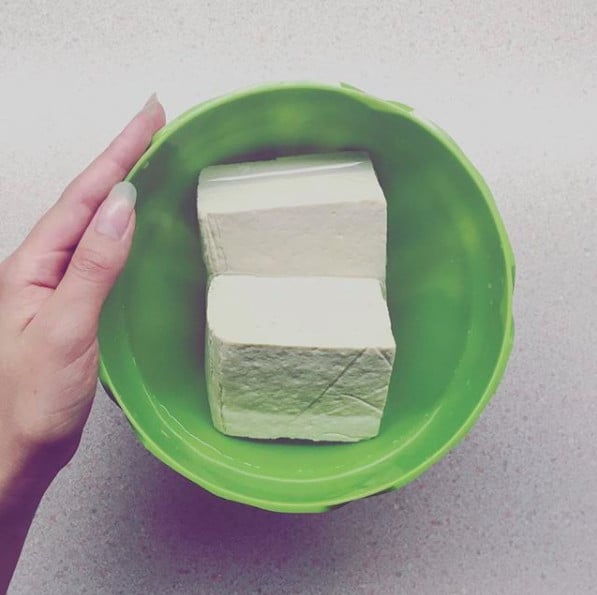
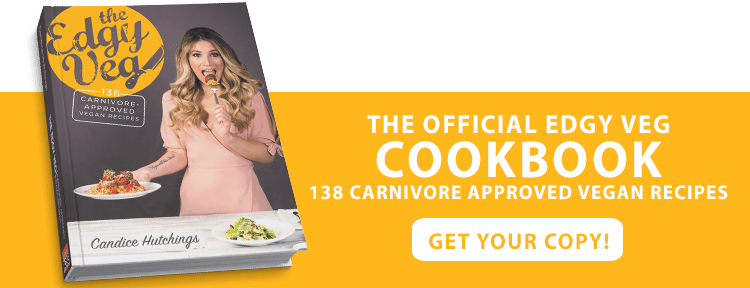

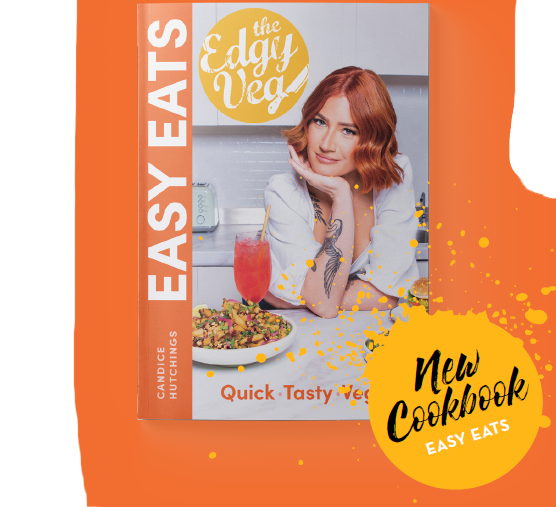
Varun says:
Excellent and interesting article !